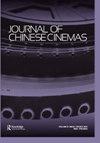Chinese-dialect film and its translation: A case study of The World (2004)
IF 0.4
3区 艺术学
0 FILM, RADIO, TELEVISION
引用次数: 2
Abstract
Abstract Over the past few decades, China has produced a significant number of films that use dialect. Many of them have been screened in international film festivals or have been distributed in different countries. Focusing on Chinese-dialect films, this paper examines how dialects in such films are used to represent a reality often masked by a mainstream, Putonghua discourse; and how Chinese-dialect films travel cross-culturally through audiovisual translation. To address these questions, I use a case study The World (2004), a multilingual film made by Jia Zhangke, China’s most prominent art house director known for his consistent and ubiquitous use of dialects. Adopting a descriptive perspective, the case study investigates the multilingual elements of the original and translated film. It mainly focuses on the strategies adopted by the translator when dealing with multilingualism in the film, and the effects of such strategies on character and plot development in the translated version.中国方言片及其翻译——以《世界》(2004)为例
摘要在过去的几十年里,中国制作了大量使用方言的电影。其中许多已经在国际电影节上放映,或者在不同的国家发行。本文以中国方言电影为研究对象,探讨了这些电影中的方言是如何被主流普通话话语所掩盖的;以及中国方言电影如何通过视听翻译进行跨文化传播。为了解决这些问题,我使用了一个案例研究《世界》(2004),这是一部由贾樟柯拍摄的多语言电影。贾樟柯是中国最著名的艺术导演,以其一贯且普遍使用方言而闻名。案例研究采用描述性的视角,考察了原译电影中的多语言元素。它主要关注译者在处理电影中使用多种语言时所采取的策略,以及这些策略对翻译版本中人物和情节发展的影响。
本文章由计算机程序翻译,如有差异,请以英文原文为准。
求助全文
约1分钟内获得全文
求助全文

 求助内容:
求助内容: 应助结果提醒方式:
应助结果提醒方式:


